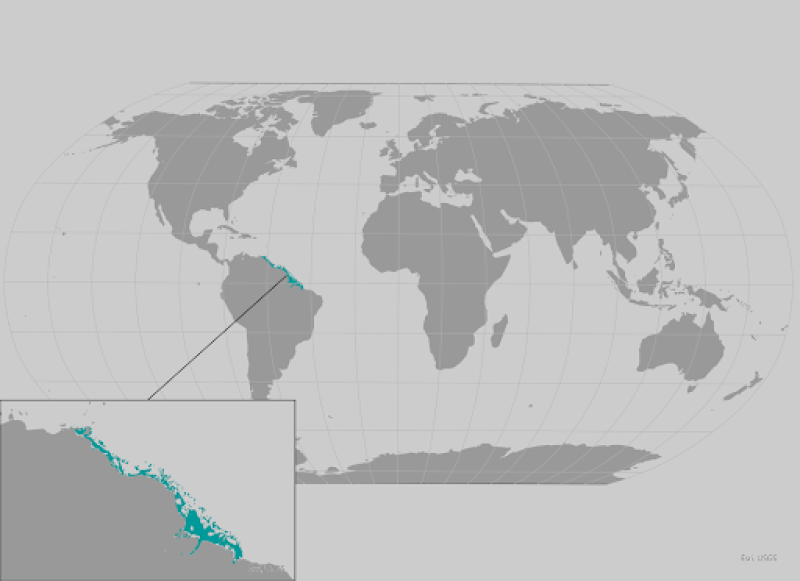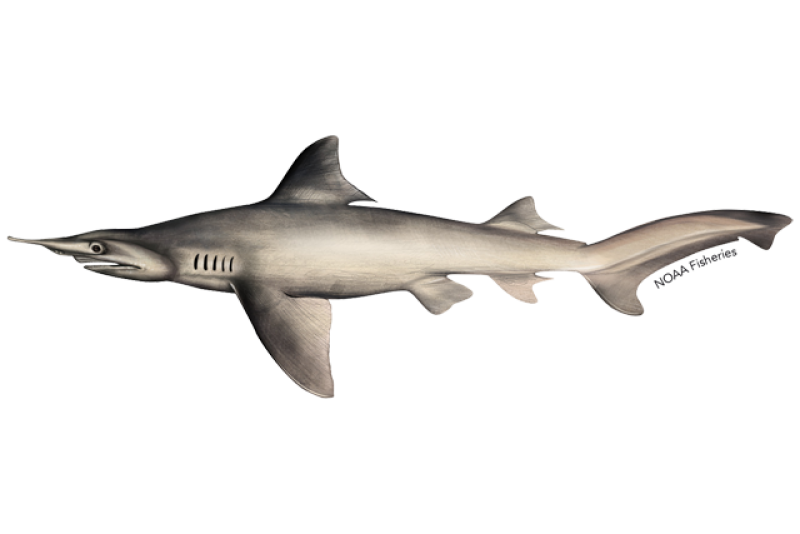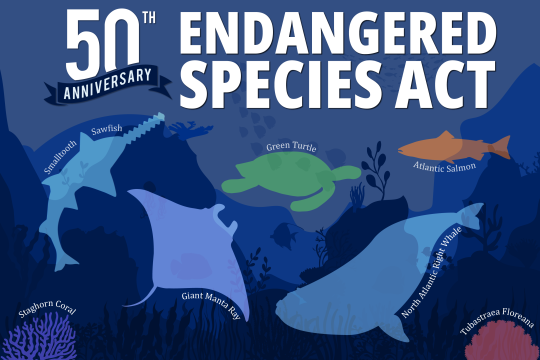About the Species
The daggernose shark is a cartilaginous fish. The species once occurred in the shallow tropical waters of the central western Atlantic Ocean and Caribbean Sea, from Venezuela to northern Brazil, making it one of the smallest ranges of any elasmobranch species. It no longer occurs in areas of Brazil where it was previously common. Recent records of the species throughout the rest of its range are scarce. The main threat to the daggernose shark is bycatch in unregulated artisanal gillnet fisheries operating throughout its range. In 2017, NOAA Fisheries listed the species as endangered under the Endangered Species Act.
Appearance
Like its name implies, the daggernose shark can be identified by its long and prominent snout. It has a uniform gray or gray-brown color and white underside, and the pectoral fins of the species are very large and paddle-shaped.
Behavior and Diet
There is limited information on the daggernose shark’s diet and feeding behavior, but some studies suggest the species feeds on schooling fishes, such as clupeids, sciaenids, herring, anchovies, and croakers. Given their small eyes and long snout, it is thought the species relies more heavily on sensory organs in the snout than its eyesight when hunting in turbid waters.
Where They Live
The daggernose shark lives in shallow, tropical, and often turbid waters in coastal areas such as estuaries, river mouths, and mangrove coastlines. The daggernose shark can be found in the central western Atlantic Ocean and Caribbean Sea and has been reported along the coasts of Venezuela, Trinidad, Guyana, Suriname, French Guiana, and northern Brazil.
 World map providing approximate representation of the daggernose shark's range.
World map providing approximate representation of the daggernose shark's range.
Lifespan & Reproduction
Female daggernose sharks live to be approximately 20 years old, while males live to be approximately 12 years old. Females are thought to give birth on alternate years to litters of approximately 3 to 7 pups. Pupping occurs during the rainy season in Brazil (January to June) after a gestation period of 12 months.
Threats
Artisanal fishing
The primary threat to the daggernose shark is unregulated artisanal fisheries. The species is caught as bycatch in artisanal gillnet fisheries for Spanish mackerel (Scomberomorus brasiliensis) and king weakfish (Cynoscion acoupa) in Brazil. Similar artisanal fisheries operate throughout the species restricted range.
Scientific Classification
| Animalia |
Chordata |
Chondrichthyes |
Carcharhiniformes |
Carcharhinidae |
Isogomphodon |
oxyrhynchus |
Last updated by NOAA Fisheries on 11/21/2024


